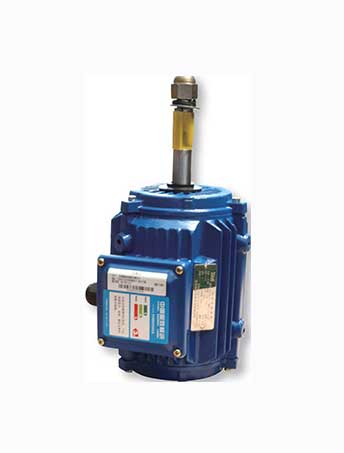
For permanent magnet motors, temperature is a very important parameter, because it will have a great impact on the performance, life safety of the motor. Therefore, it is critical to understand the temperature of the motor operating environment. In this paper, we will explore how to effectively determine the temperature of the permanent magnet motor operating environment.
There are many kinds of temperature measurement methods for the working environment of permanent magnet motor, including thermistor, thermocouple, infrared thermometer hygrograph. Below we will introduce the principle application of each of these methods.

1. Thermistor
A thermistor is a device that uses temperature changes to change the resistance value. The working principle of a thermistor is that when the ambient temperature of the resistor changes, the resistance value of the resistor also changes. Therefore, when the resistor is connected to a circuit, the temperature at which the resistor is located can be calculated by measuring the changes in current voltage in the circuit.
The advantage of thermistors is that they are relatively cheap, easy to use, can be measured in real time. But the disadvantage is that the accuracy is relatively low, it needs to be calibrated for a longer time to maintain accuracy. In addition, the thermistor can only measure the temperature at one point, so it is possible to fully measure the motor surface temperature.
2. Thermocouple
A thermocouple is a sensor that uses the thermoelectric potential difference between two different metals to measure temperature. Thermocouples work on the principle that when two different metals come into contact, a potential difference is formed between the metals. As the ambient temperature changes, this potential difference also changes. By measuring the potential difference, the temperature of the thermocouple can be calculated.
The advantages of thermocouples are high accuracy, fast response, instant measurement. The disadvantage is that the price is high, the cold end compensation needs to be carried out during measurement, otherwise the measurement results will produce errors.
3. Infrared thermometer
Infrared thermometer is to use the infrared radiation power emitted by the object the object surface temperature is proportional to the principle, by measuring the infrared radiation intensity emitted by the object to calculate the temperature of the object surface. The advantage of infrared thermometer is that the measuring distance is far, which can avoid the interference caused by the contact temperature sensor; The disadvantage is that the price is relatively high, it is necessary to avoid substances that affect the measurement accuracy such as light source steam when using.
4. Hygrograph
Hygrometers can measure parameters such as temperature humidity in the air. The working principle of the hygrograph is: by measuring the heat sensor humidity sensor in the hygrograph, the temperature humidity information in the air can be obtained. There are two common temperature humidity meters, mechanical electronic, of which the electronic temperature humidity meter is widely used because of its high accuracy.
Sum up
Through the above introduction, we can see that different temperature measurement methods have advantages disadvantages. We can combine the specific situation, choose their own temperature measurement method. In the actual measurement process, we also need to pay attention to the calibration maintenance of the temperature sensor to improve the measurement accuracy extend the life of the sensor. Finally, we need to remember that it is very important to regularly measure the temperature of the motor, which can help us find timely solve the problems that occur during the operation of the motor, improve the working efficiency, life safety of the motor.